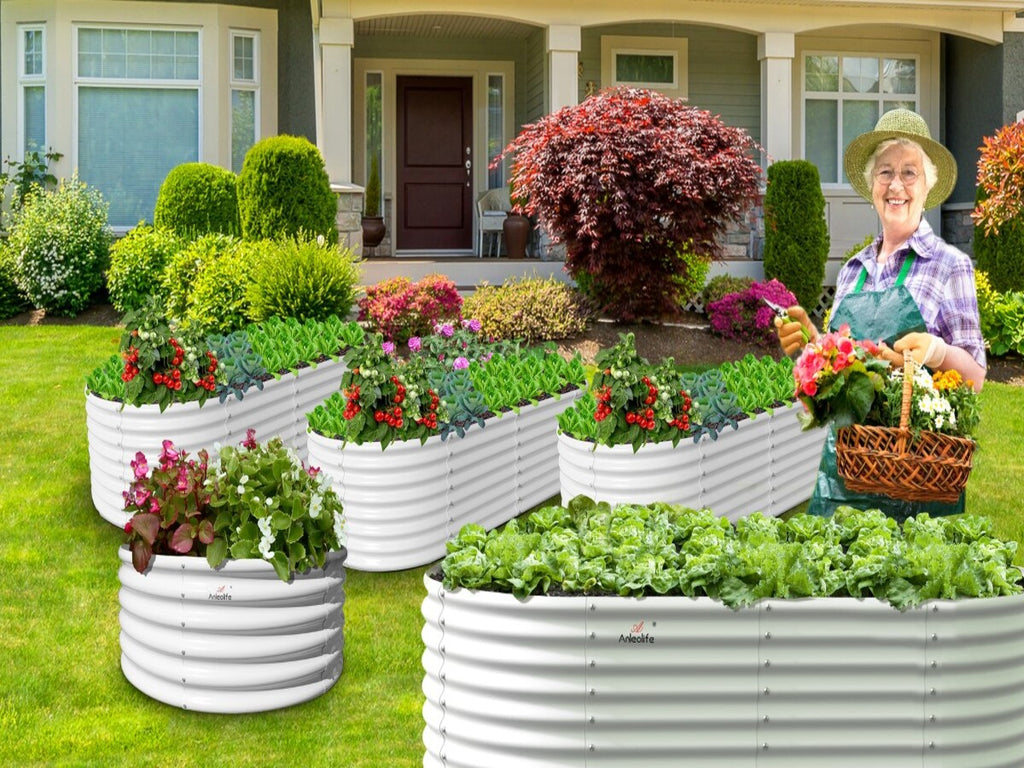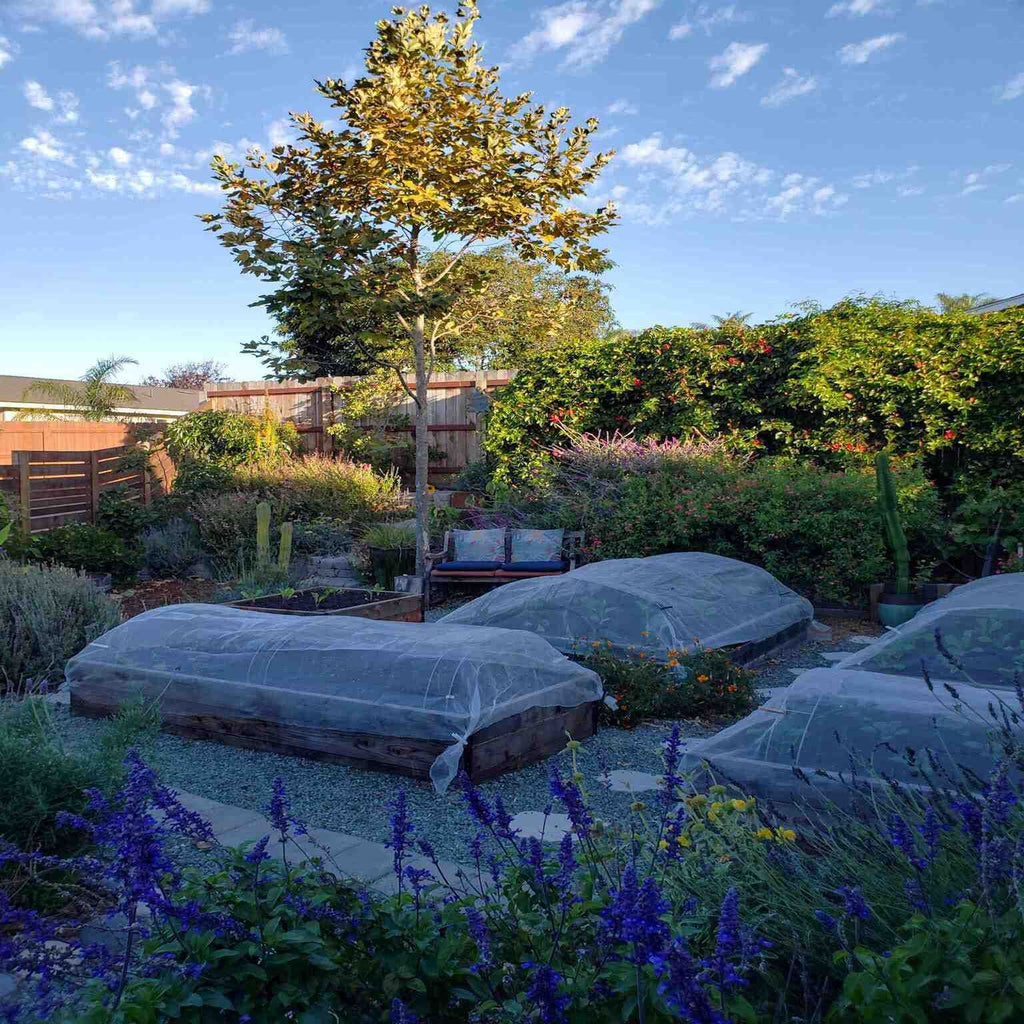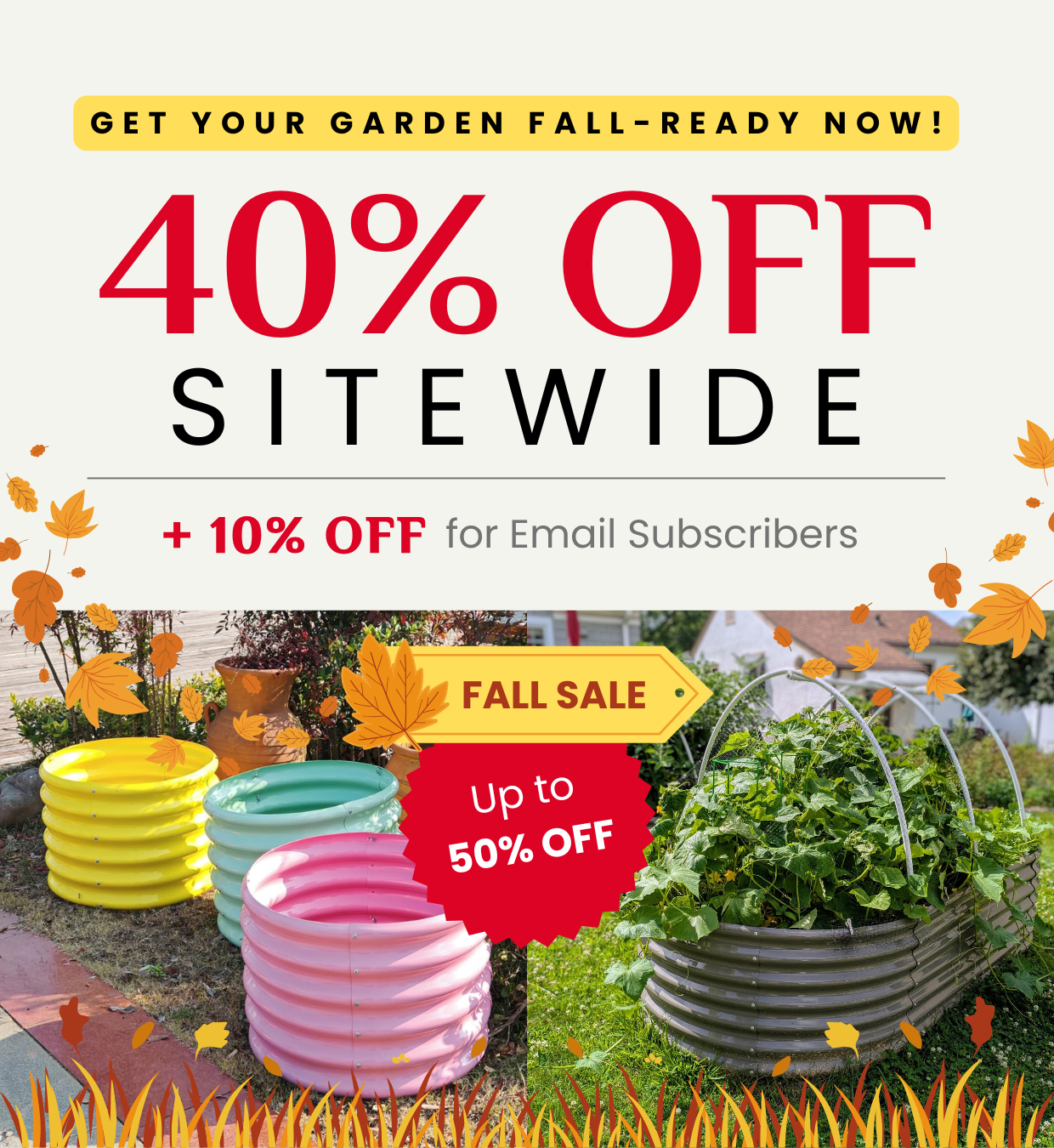Raised garden beds offer numerous advantages, such as improved soil conditions, better weed control, and easier access to planting and harvesting. However, even with these benefits, certain missteps can undermine the success of your garden. Understanding these 13 common mistakes and knowing how to deal with them can help ensure a thriving, productive garden.

1. Pick the Wrong Spot
Choosing the right spot for your raised garden bed is more than just finding empty space in your yard. It involves understanding the daily movement of the sun across your property and recognizing areas prone to water collection. Ignorably placing your bed in a shaded or uneven area can doom your plants from the start.
Tips
Use a sun calculator or observe the sunlight patterns in your yard throughout the day to find a spot that receives adequate sunlight. If your yard is mostly level, look for subtle slopes and position your garden bed at the highest point to avoid waterlogging. Try integrating the bed into your landscape by matching it with existing elements such as trees, bushes, or decorative elements to create a cohesive look.
2. Not Think About the Water Source
Watering your garden can become a tiresome chore if the water source is not conveniently located. Moreover, incorrect watering methods can invite a host of problems, including root rot and leaf fungus. The goal is to make watering as effortless and efficient as possible to maintain consistent soil moisture.
Suggestions
Map out a watering plan before installing your raised beds. If manual watering, ensure your garden hose reaches all areas comfortably. Consider installing a rain barrel system to collect natural rainwater for your garden, reducing water waste and utility bills. If you opt for an irrigation system, plan the layout to cover all plants evenly and adjust timers according to the seasons and weather conditions.
3. Raised Beds Placed Too Close Together
The joy of working in your garden can quickly diminish if you're unable to move freely between beds. Tight spacing can restrict air flow and light, promoting disease and pest infestations. It also makes it difficult to perform essential tasks like pruning, weeding, and harvesting.
Tips
Measure the space needed for pathways before setting up your beds, considering wheelbarrow or garden cart access if needed. Use strings or chalk to outline the beds and pathways on the ground before construction. Remember, it's not just about the space you need now but also about accommodating future growth and garden expansions.
4. Use the Wrong Materials for Construction
The materials you choose for your raised beds can significantly affect their lifespan and your plants' health. Certain treated woods contain chemicals that can leach into the soil, affecting plant growth and potentially entering your food. Metals can heat up, affecting root temperatures, but certain types, like galvanized steel, are safer and last longer than wood.
Suggestions
Research materials thoroughly before deciding. Cedar and redwood are excellent choices for wood beds due to their natural resistance to rot and pests. If opting for metal, ensure it's a safe, food-grade type. For those on a budget or looking for alternative materials, recycled plastics or composite materials can provide durability without the risk of contamination. Always ensure that the materials are safe for food gardens and consider the environmental impact of your choices.
5. Crowd Your Plants
Expanded Explanation: Plants need their personal space, just like people. When they're too close, they compete for everything: light, water, and nutrients. This battle not only weakens them, making them more prone to diseases and pests but also can lead to underdeveloped plants and low yields.
Tips
Before planting, familiarize yourself with the spacing requirements of each plant type. Use a ruler or a spacing tool when planting seeds or transplanting to ensure each plant has enough room to grow. Consider the mature size of the plants, not just their size when you plant them. Vertical gardening techniques, such as trellises for climbing plants, can also help maximize space and air circulation.
6. Plant the Wrong Plants
Every plant has its preferred growing conditions, and not all of them will thrive in your specific climate. Ignoring this can lead to frustration as you watch plants struggle or fail despite your best efforts.
Suggestions
Research the plants suitable for your climate zone before purchasing seeds or seedlings. Local garden centers and cooperative extension services can be great resources for this information. Also, consider the microclimates in your yard. Areas that receive more shade or wind might require different plants than the sunniest parts of your garden.

7. Skip Mulch
Mulch does far more than make your garden look neat and tidy. It conserves water by reducing evaporation, keeps weeds at bay, and can improve soil quality as organic mulches decompose. Without mulch, your garden works harder than it needs to and becomes more vulnerable to temperature swings and invasive weeds.
Tips
Apply a 2-3 inch layer of organic mulch around your plants after planting. Wood chips, straws, and leaf litter are all effective options. Be sure to leave some space around the stem of each plant to prevent rot. Refresh the mulch as needed throughout the growing season, especially in hot, dry periods.
8. Not Use the Correct Soil
Soil is the foundation of your garden. Using the wrong type can lead to waterlogged roots or, conversely, soil that dries out too quickly. Plus, plants struggle to grow in nutrient-poor soil, leading to weak growth and lower yields.
Tips
Invest in a high-quality soil mix designed for raised beds, which typically includes a balance of compost, peat moss, and vermiculite or perlite. This mix ensures good drainage and aeration while retaining moisture and nutrients. Consider getting a soil test to tailor your soil amendments to your garden's specific needs. Adding organic matter like compost annually can help maintain soil health and fertility.
9. Ignore Pathways
Pathways are the arteries of your garden, allowing you to access your plants without trampling the soil around them. Ignoring these can lead to compacted soil, making it hard for plant roots to grow. It can also encourage weed invasion, making your garden less tidy and more difficult to manage.
Suggestions
Design your garden with accessibility in mind. Use materials like mulch, gravel, or stepping stones to create clear, stable pathways. These materials can suppress weed growth and improve the aesthetic appeal of your garden. Ensure the pathways are wide enough to comfortably walk through and carry garden supplies.
10. Not Amend the Soil
Soil isn't just dirt-it's a living, breathing ecosystem that needs nourishment to support plants. Over time, this ecosystem can become exhausted if not properly cared for, leading to poor plant health and reduced yields.
Tips
Each season, rejuvenate your soil by mixing in organic amendments like compost, worm castings, or well-aged manures. These materials add nutrients and improve soil structure, promoting healthy root development and plant growth. Consider crop rotation and green manures to maintain soil health and prevent nutrient depletion.
11. Lack of Irrigation Plan
Water is life for your garden, but too much or too little can be detrimental. An effective irrigation plan ensures your plants receive the right amount of water at the right time, maximizing growth while conserving water resources.
Suggestions
Consider the water needs of your plants and the local climate when planning your irrigation. Drip irrigation systems can provide consistent, targeted watering directly to the plant roots. Mulching helps retain soil moisture, reducing the need for frequent watering. Use timers or moisture sensors to automate watering and ensure consistency.
12. Not Utilize Hoops
Hoops add versatility to your garden, allowing you to create microclimates and extend your growing season. Without them, your plants are more exposed to the whims of nature, from frost to intense sun.

Tips
Install hoops over your raised beds and cover them with the appropriate material for the season-clear plastic for cold protection, shade cloth for heat, or netting for pest control. This setup can be easily assembled and modified as needed, providing your plants with optimal growing conditions.
13. Neglect to Plan for Plant Growth and Maturity
Plants need space to reach their full potential. Ignoring the mature size of plants when planning your garden can lead to overcrowding, reduced air circulation, and limited sunlight, stunting plant growth and production.
Suggestions
Before planting, research the expected size and growth habits of each plant. Allocate space accordingly, considering both the root spread and the above-ground growth. Use vertical space for climbing plants, and remember to leave room for access during maintenance and harvest. Planning with growth in mind ensures a healthier, more productive garden.
The Bottom Line
Avoiding these common mistakes can drastically improve the health and productivity of your raised garden beds. By carefully selecting the right location, materials, and plants and by maintaining proper spacing, soil quality, and irrigation, you can enjoy the full benefits of raised bed gardening.
Read More
- Anleolife Garden View: How to Build a Raised Garden Bed & Garden Boxes
- Tips from Anleolife Garden Bed: 11 Best Gardening Tools Ignored by Mos
- Anleolife Garden View: How To Decide A Best Location For Your Raised G
- A Concise Filling Approach as Reference – Anleolife Garden
- Anleolife Garden View: Is Raised Garden Bed Made of Metal Really Harmf

